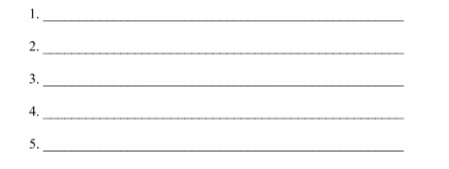There are 9 key elements that you should be looking for as you read each insight in STEP 5. Name 5 of them:

1. The author’s disciplinary affiliation.
2. The author’s insights, thesis, or argument
3. The author’s assumption(s) concerning the problem
4. The author’s epistemological position
5. Key concepts and their meanings
6. The theory advanced by the author and grounded in research that
explains the data collected
7. The author’s research method (which reflects the method favored by the
author’s discipline)
8. The phenomena addressed and the relationship of parts to whole
(information invaluable for mapping the problem)
9. The author’s bias (ethical or ideological)
You might also like to view...
The Golden Age of Athens ended with the__________.
A. death of Socrates B. death of the Thirty Tyrants C. overthrow of the Spartans D. expulsion of Plato from Athens
This drawing medium utilizes a piece of silver wire set in a holder.
A. silverpoint B. sanguine C. pencil D. bister
Using the contextual theories of art criticism, analyze Jean-Michel Basquiat’s Horn Players.
What will be an ideal response?
The term Expressionism as an early 20th-century arts movement in Vienna refers to
A) the loudness and softness in music. B) the goal of reflecting man's inner world, described by the writings of Sigmund Freud. C) the expression of new ideas. D) the similarity of this movement to Impressionism.